| NGC 3293 - The Gem Cluster This is an open cluster (the bright white spot in the very center) in the constellation Carina. It consists of at least 100 stars. After spending quite a while looking for information on the surrounding nebulae, I had to give up and admit defeat. Couldn't find any info. These first three images are of the same object - just processed with different palettes. This first one was done in OSH. Image processed by Ron Yelton, original data from Telescope Live |
NGC 3293 - The Gem Cluster This second effort was done in the OSH palette. Image processed by Ron Yelton, original data from Telescope Live |
NGC 3293 - The Gem Cluster This third effort was processed with the SHO palette. Image processed by Ron Yelton, original data from Telescope Live |
| Location:
Heaven's Mirror Observatory,
Australia
Date: February - April 2024 Mount: Paramount MX+ Telescope: FSQ-106ED (AUS-2) Camera: QHY600m @ -25c Exposure: 109 x 5 min each for HSO Total: 8hrs 35 min |
Location:
Heaven's Mirror Observatory,
Australia
Date: February - April 2024 Mount: Paramount MX+ Telescope: FSQ-106ED (AUS-2) Camera: QHY600m @ -25c Exposure: 109 x 5 min each for HSO Total: 8hrs 35 min |
Location:
Heaven's Mirror Observatory,
Australia
Date: February - April 2024 Mount: Paramount MX+ Telescope: FSQ-106ED (AUS-2) Camera: QHY600m @ -25c Exposure: 109 x 5 min each for HSO Total: 8hrs 35 min |
 |
 |
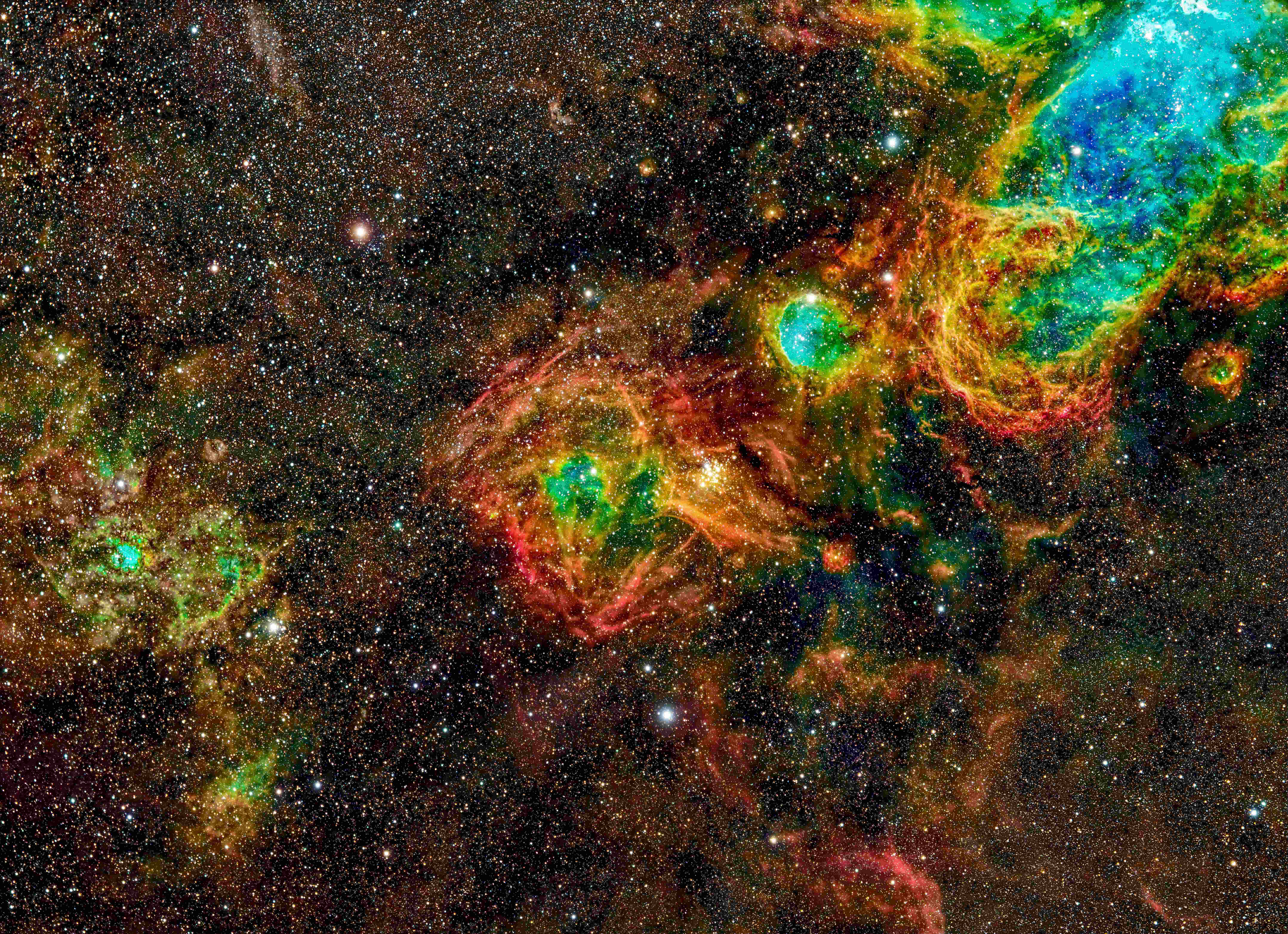 |
| NGC 1763 This emission nebula is also known as the Bean Nebula. It resides in the Large Magellanic Cloud in the constellation Dorado. it also has an embedded open cluster. Image processed by Ron Yelton, original data from Telescope Live |
NGC 2070 -
Tarantula Nebula In our local group of galaxies, the Tarantula Nebula is the largest star forming regions as well as the largest Hydrogen II regions. It is so bright that if it were as close to us as the Orion Nebula (1600 Ly), it would produce visible shadows in in daylight. it is 160,000 light years away and is 931 light years in size. Image processed by Ron Yelton, original data from Telescope Live |
RCW 127 - The
Cat's Paw Nebula Commonly known as the Cat's Paw Nebula, it is comprised of several Hydrogen Alpha regions. This image was processed in the OHS palette. It resides in the constellation Scorpius, and is about 6000 light-years away. Image processed by Ron Yelton, original data from Telescope Live |
|
Location: El
Sauce Observatory, Chile
Date: August - December 2021 Mount: Mathis MI-1000 Telescope: Planewave CDK24 f/6.6 Camera: FLI ProLine PL9000 @-25c (CCD) (CHI-1) Exposure: 59 x 10 min each for LRGB. Total: 9 hrs 50 min |
Location: El
Sauce Observatory, Chile
Date: August - December 2021 Mount: Mathis MI-1000 Telescope: Planewave CDK24 f/6.6 Camera: FLI ProLine PL9000 @-25c (CCD) (CHI-1) Exposure: 59 x 10 min each for LRGB. Total: 9 hrs 50 min |
Location: El
Sauce Observatory, Chile
Date: August 2024 Mount: Mathis MI-1000/1250 Telescope: Planewave CDK24 (CHI-1) Camera: QHY600m @-25c Exposure: 35 x 5 min for OHS. Total: 2 hrs 55 min |
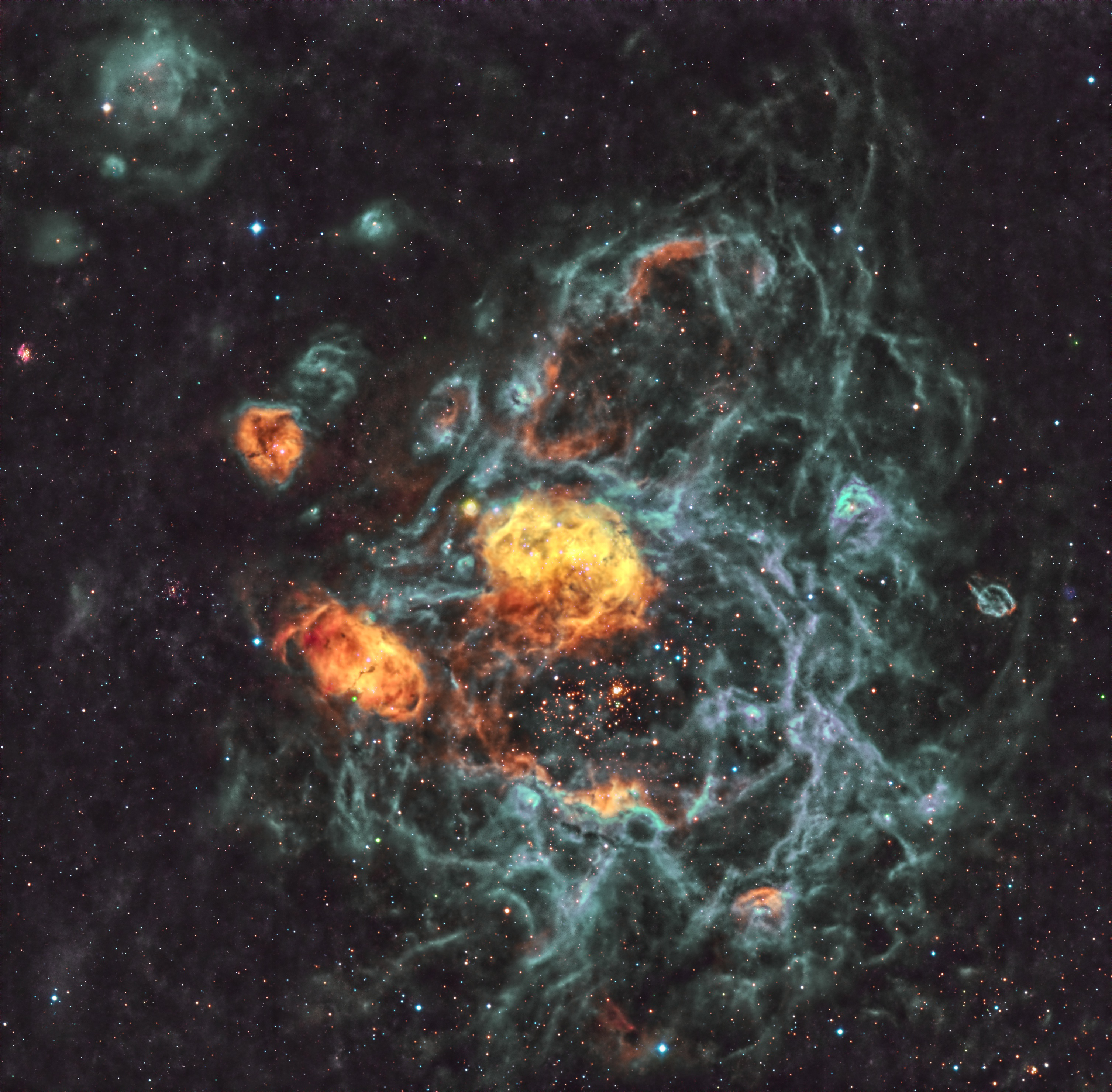 |
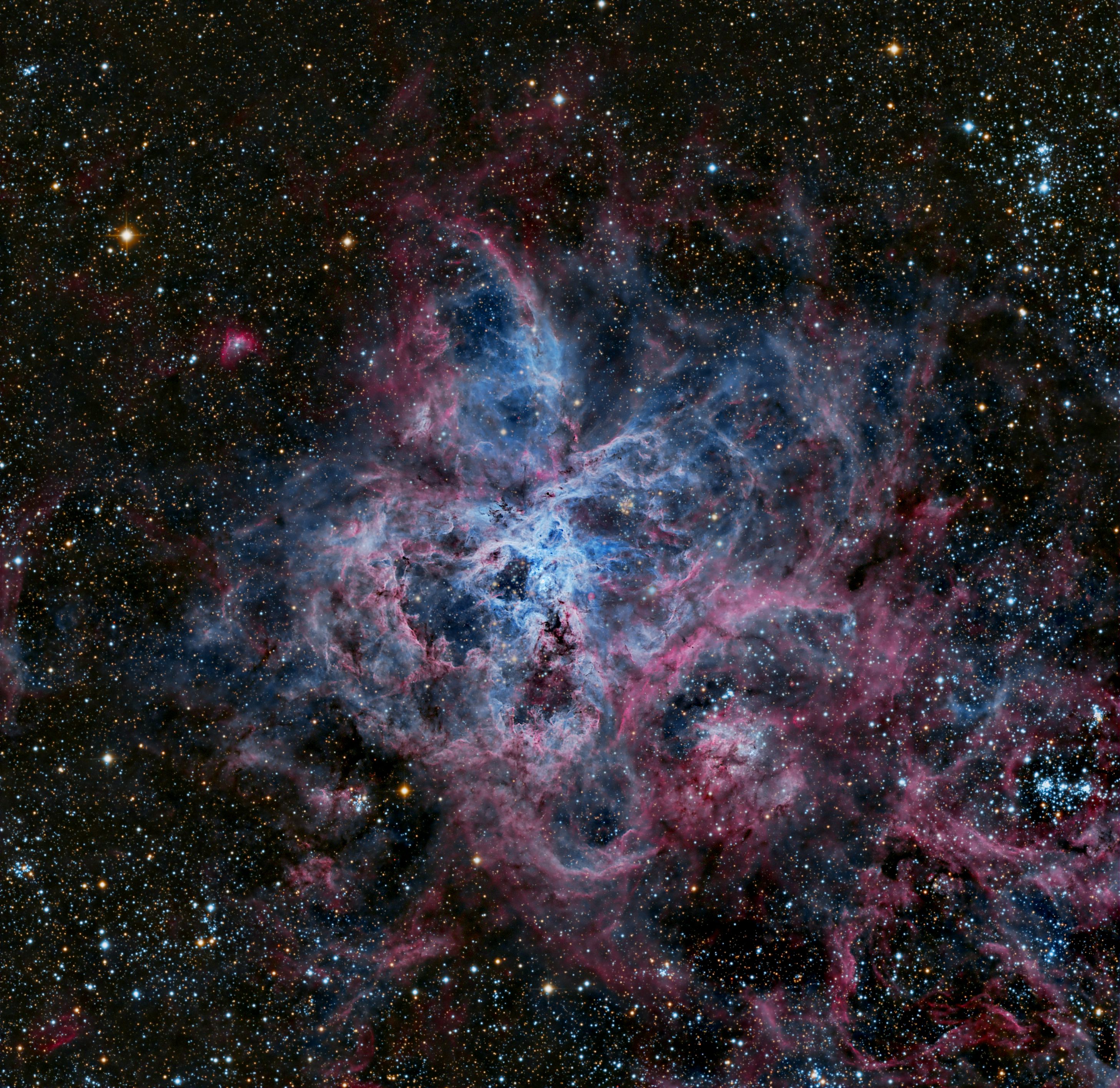 |
 |
| Lupus Dust Panel #1 This, and the image next door are large dusty regions in the constellation Lupus (The Rabbit). There is also a dark nebula. Image processed by Ron Yelton, original data from Telescope Live |
Lupus Dust Panel #2 A view of another part of the Lupus region. Image processed by Ron Yelton, original data from Telescope Live |
LDN 1089 - Dark Nebula A dusty area in the constellation Cepheus. There is a small HII region on the left side, while the rest of the image contains a lot of dusty areas as well as a few dark nebulae. Image processed by Ron Yelton, original data from Telescope Live |
|
Location:
Heaven's Mirror Observatory,
Australia
Date: August 2024 Mount: Paramount MX+ Telescope: FSQ-106ED (AUS-2) Camera: QHY600m @ -25c Exposure: 63 x 5 min each for LRGB Total: 6hrs 5 min |
Location:
Heaven's Mirror Observatory,
Australia
Date: August 2024 Mount: Paramount MX+ Telescope: FSQ-106ED (AUS-2) Camera: QHY600m @ -25c Exposure: 24 x 5 min each for LRGB Total: 2 hrs |
Location: IC Astronomy Observatory, Spain
Date: August 2024 Mount: Paramount MX+ Telescope: Takahashi FSQ-106ED (SPA-1) Camera: QHY600m CMOS @ -25c Exposure: SHO 35 x5 min Total: 2 hrs 55 min |
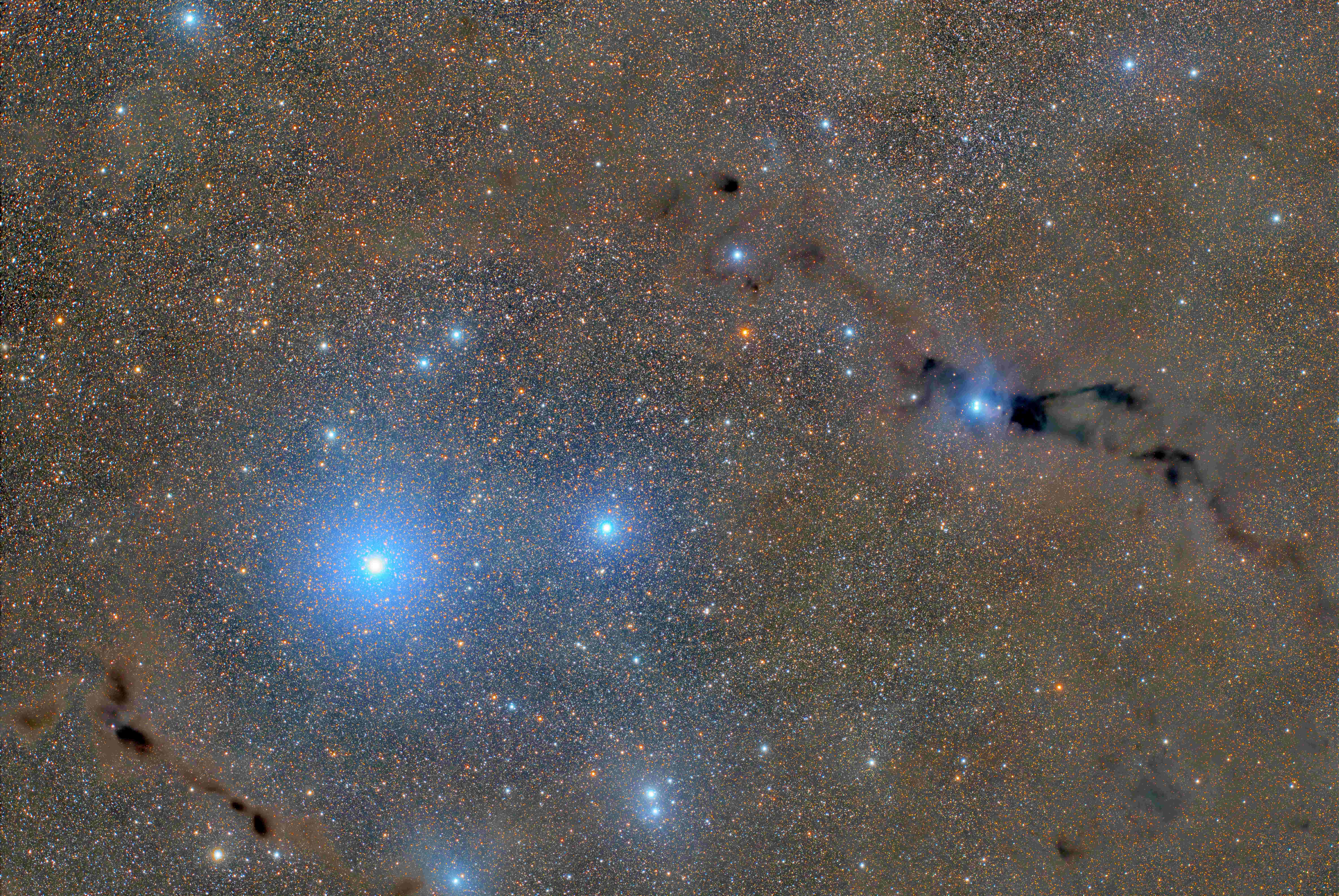 |
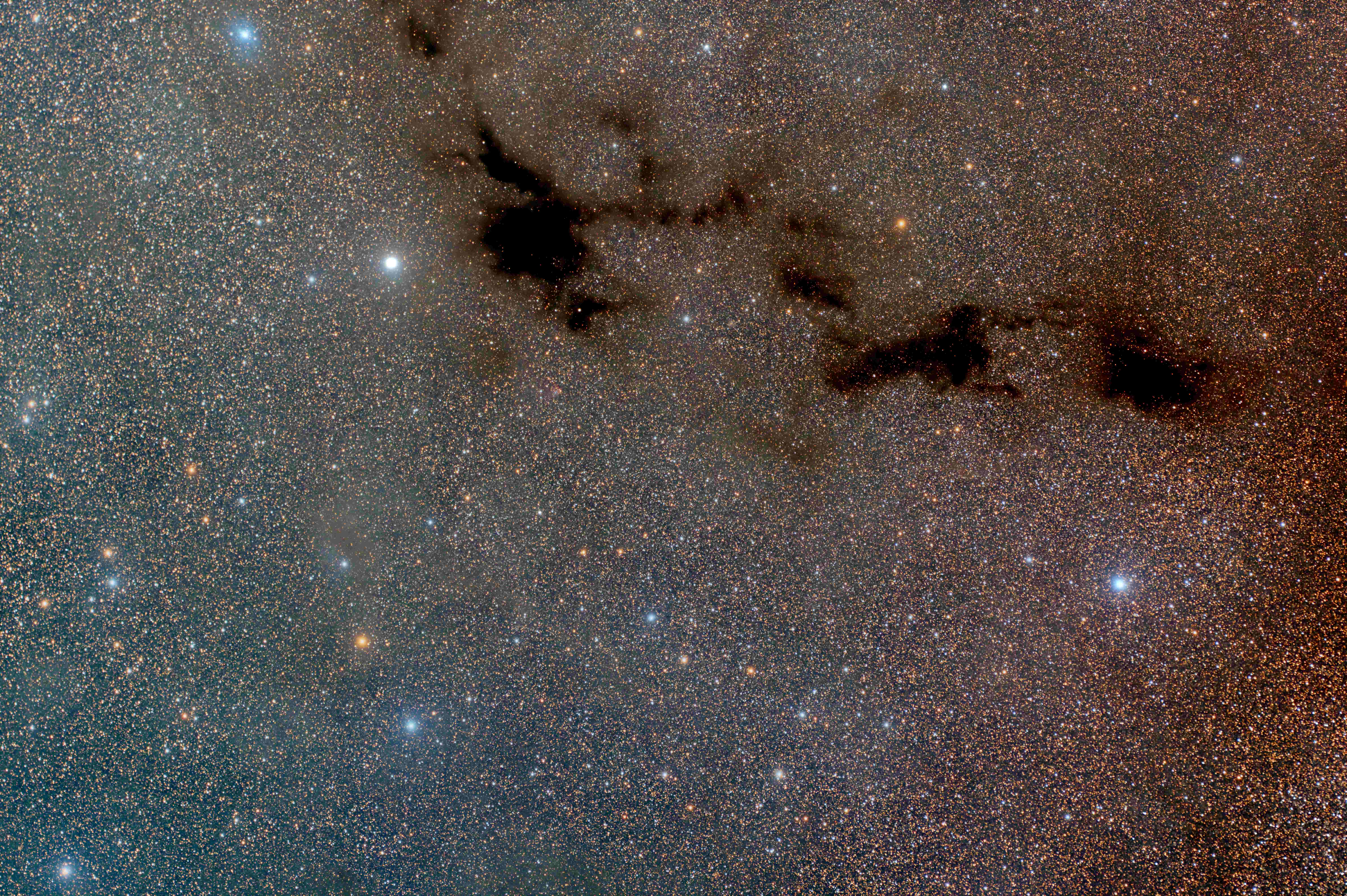 |
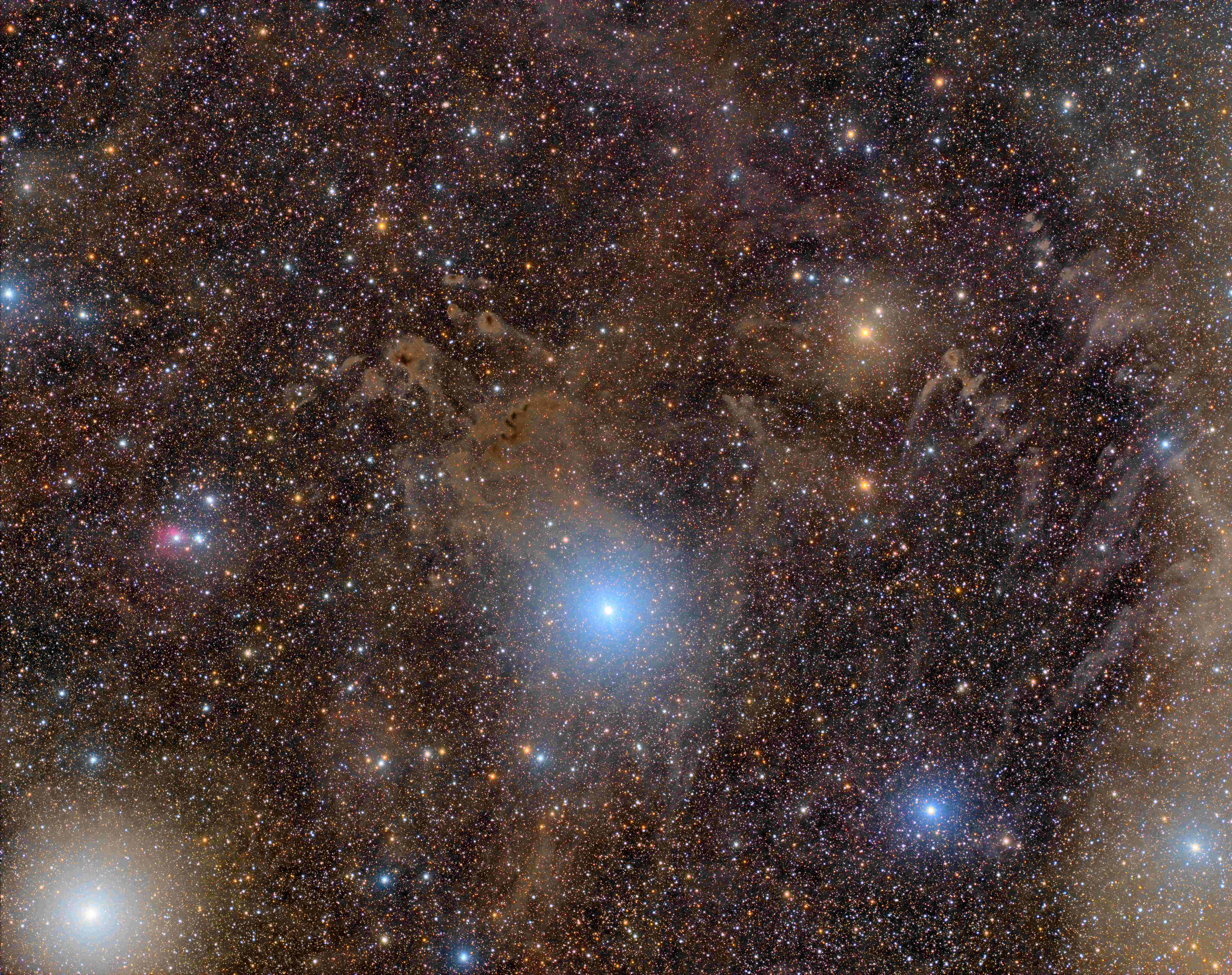 |
| NGC 6302 - The Butterfly or Bug
Nebula (CMOS) This is a bipolar planetary nebula located in the constellation Scorpius. Scientists are still unsure as to why a star would end its life in this fashion as opposed to the more common spherical planetary nebula. the surface of this white dwarf is around 250,000 degrees Celsius, which makes it one of the hottest bodies known to us. This image was taken with a new CMOS camera. Image processed by Ron Yelton, original data from Telescope Live |
NGC 6302 - The Butterfly or Bug
Nebula (CCD) This image is of the same object as the one to the left. The difference being that this image was taken with an older CCD camera and tightly cropped. Image processed by Ron Yelton, original data from Telescope Live |
RCW 62 Unfortunately, there isn't much info out there for objects in the RCW catalog. So here is what I was able to find. RCW 62 (IC 2944) corresponds to the body of the Running Chicken Nebula in the constellation Centaurus. it is comprised mostly of HII and is an emission nebula. It sits approximately 6500 light-years away. It also hosts a few star clusters as well as some bright X-ray sources. This image was processed in the OHS palette. Image processed by Ron Yelton, original data from Telescope Live |
|
Location: El
Sauce Observatory, Chile
Date: August 2024 Mount: Mathis MI-1000/1250 Telescope: Planewave CDK24 (CHI-1) Camera: QHY600m @-25c Exposure: 35 x 5 min for OHS. Total: 3 hrs |
Location: El
Sauce Observatory, Chile
Date: July 2021 Mount: Mathis MI-1000 Telescope: Planewave CDK24 f/6.6 Camera: FLI ProLine PL9000 @-25c (CCD) (CHI-1) Exposure: 86 x 10 min each for OHS Total: 13 hrs 50 min |
Location:
Heaven's Mirror Observatory,
Australia
Date: May 2024 Mount: Paramount MX+ Telescope: FSQ-106ED (AUS-2) Camera: QHY600m @ -25c Exposure: 117 x 5 min each for OHS Total: 9 hrs 15 min |
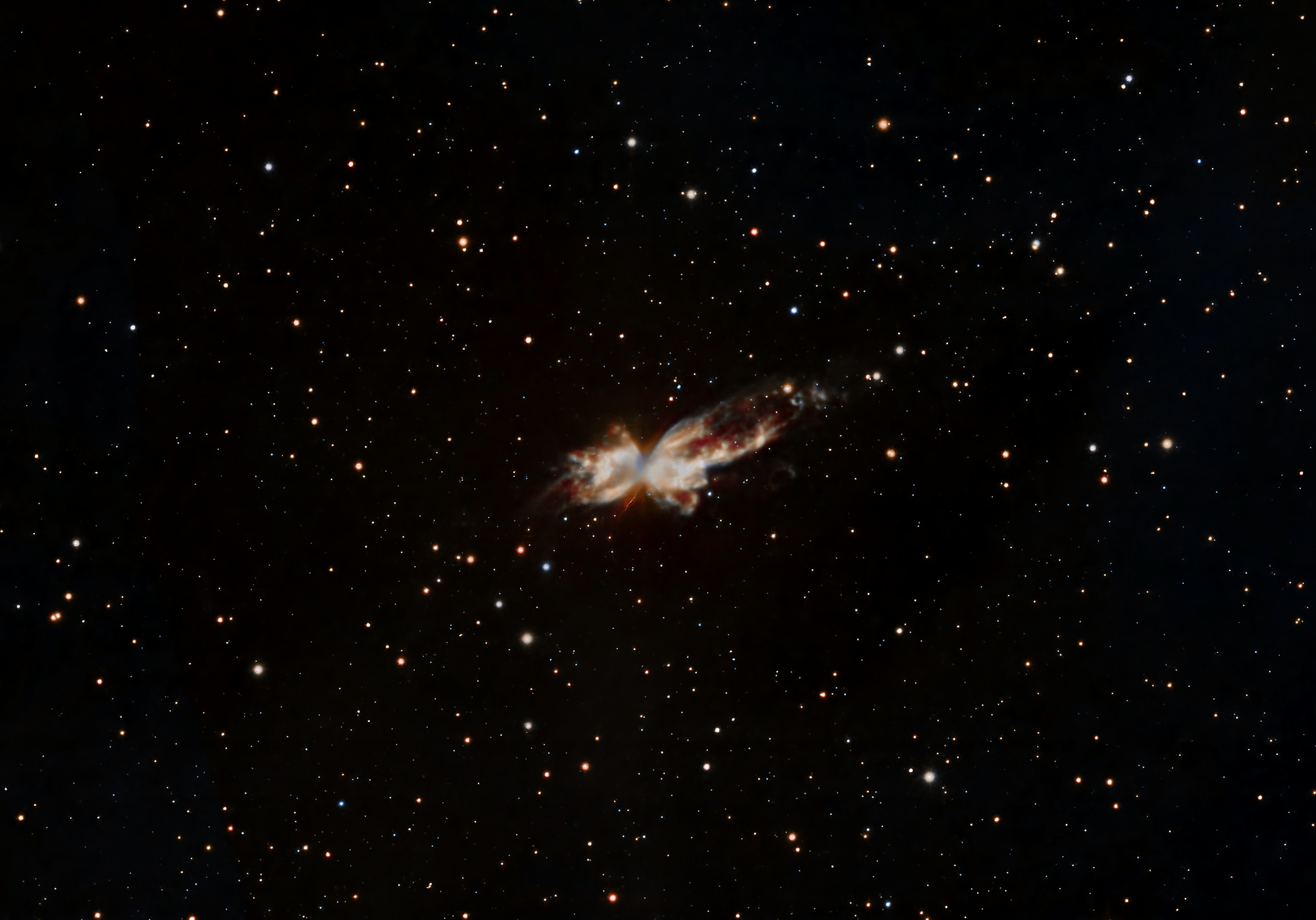 |
 |
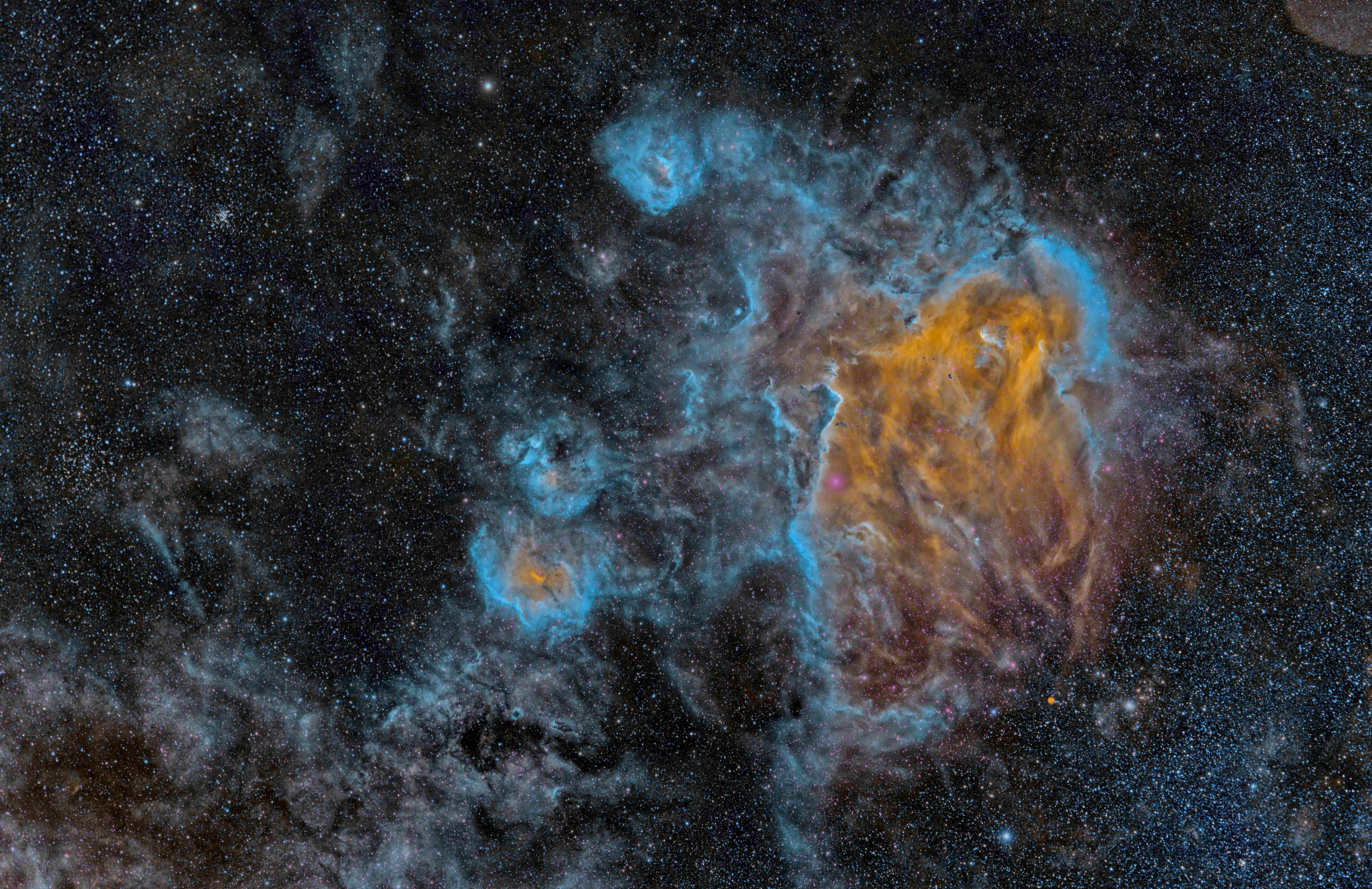 |
|
RCW 62 This is another version of RCW 62. It was processed in the OHS palette like the preceding one, but applying the colors in a different way. when working with narrowband images there seem to be no end to the color possibilities. Image processed by Ron Yelton, original data from Telescope Live |
NGC 6914 In the constellation Cygnus (the Swan), lies NGC 6914, a reflection nebula. it was discovered by Edouard Stephan on August 29, 1881. This data set for this image was acquired by an imager with the Sacramento Astronomical Society and processed by Ron Yelton. |
Cederblad
214 CED 214 is part of a large molecular cloud and star forming region in the constellation Cepheus (the king of Aethiopia). Image processed by Ron Yelton, original data from Telescope Live |
|
Location:
Heaven's Mirror Observatory,
Australia
Date: May 2024 Mount: Paramount MX+ Telescope: FSQ-106ED (AUS-2) Camera: QHY600m @ -25c Exposure: 117 x 5 min each for OHS Total: 9 hrs 15 min |
Location: Blue Canyon
Airport
Date: 2024 Mount: ioptron CEM120 Telescope: Stellarvue SVX152 Camera: QHY600m Exposure: 428 x 2 min each for OHS Total: 14 hrs 2 min |
Location: IC Astronomy Observatory, Spain
Date: June 2024 Mount: Officina Stellare ProRC 700 Telescope:Officina Stellare ProRC 700 (SPA-2) Camera: QHY600m @ -25c Exposure: 96 x 10 min each for HSO Total: 8 hrs |
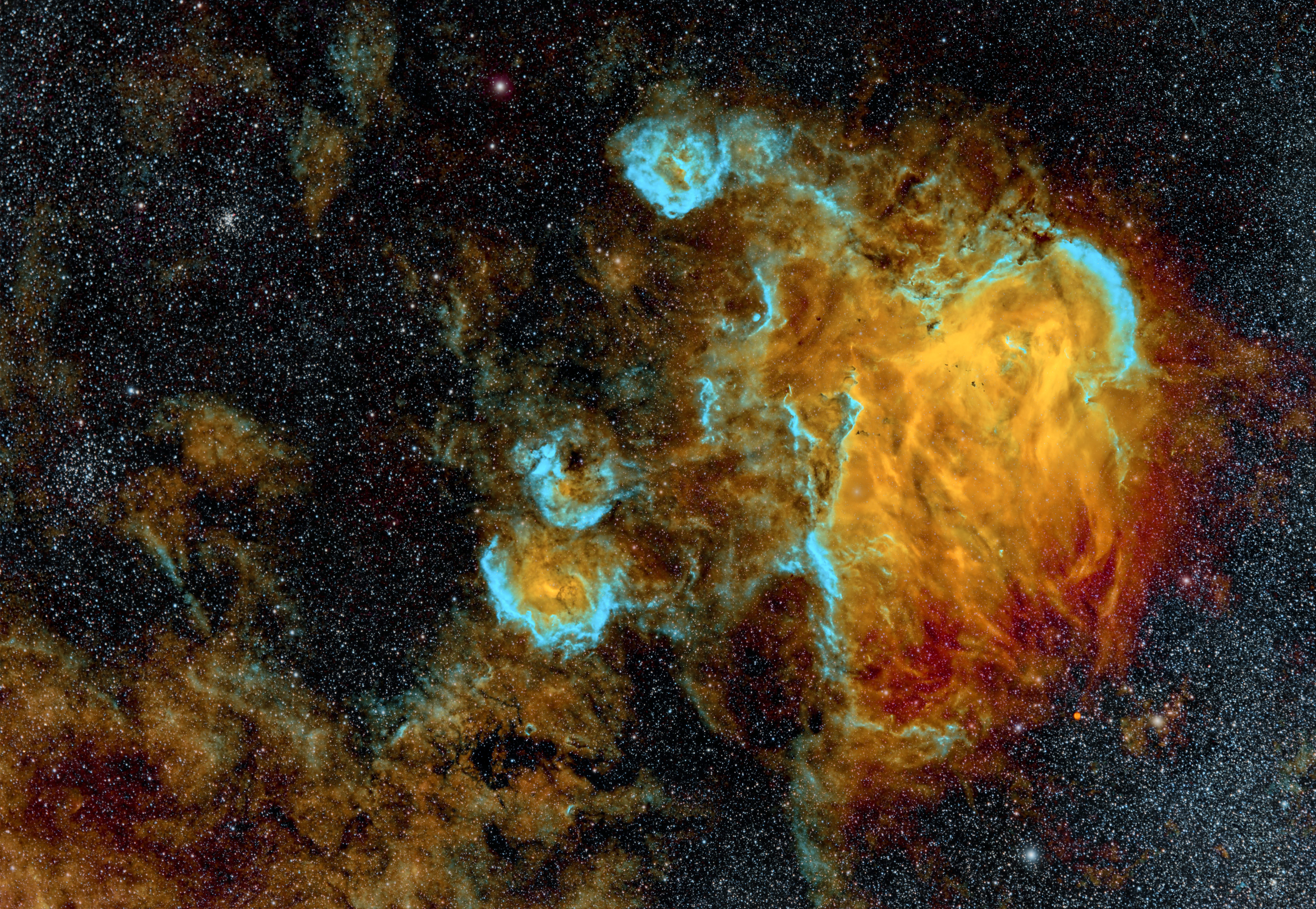 |
 |
 |
|
The Coal
Sack This is a dark nebula in the constellation Crux. It's an extremely large nebula that extends into both the Centaurus and Musca constellations. It was first reported back in 1499 and was also noticed by Magellan. Image processed by Ron Yelton, original data from Telescope Live |
IC
1396 - The Elephant Trunk Nebula Located in the constellation of Cepheus, the elephant Trunk is part of a much larger region of ionized gas - IC 1396. The tip of the trunk is a dark, dense glubule called IC 1396A, which has been hollowed out by radiation erosion. The nebula is thought to be a star forming region with several young, hot blue stars. These stars are thought to be only around 100,000 years old. Image processed by Ron Yelton, original data from Telescope Live |
DWB
111 - The Propeller Nebula The Propeller Nebula is in the summer constellation of Cygnus (the Swan). It is an emission nebula. Image processed by Ron Yelton, original data from Telescope Live |
|
Location:
Heaven's Mirror Observatory,
Australia
Date: May 28, 2024 Mount: Paramount MX+ Telescope: FSQ-106ED (AUS-2) Camera: QHY600m @ -25c Exposure: 24 x 5 min each for LRGB Total: 2 hrs |
Location: IC Astronomy Observatory, Spain
Date: July 2024 Mount: Paramount MX+ Telescope: Takahashi FSQ-106ED (SPA-1) Camera: QHY600m CMOS @ -25c Exposure: SHO 35 x5 min Total: 11 hrs 50 min1 |
Location: IC Astronomy Observatory, Spain
Date: June 2022 Mount: Officina Stellare ProRC 700 Telescope:Officina Stellare ProRC 700 (SPA-2) Camera: QHY600m @ -25c Exposure: 42 x 10 min each for HSO Total: 7 hrs |
 |
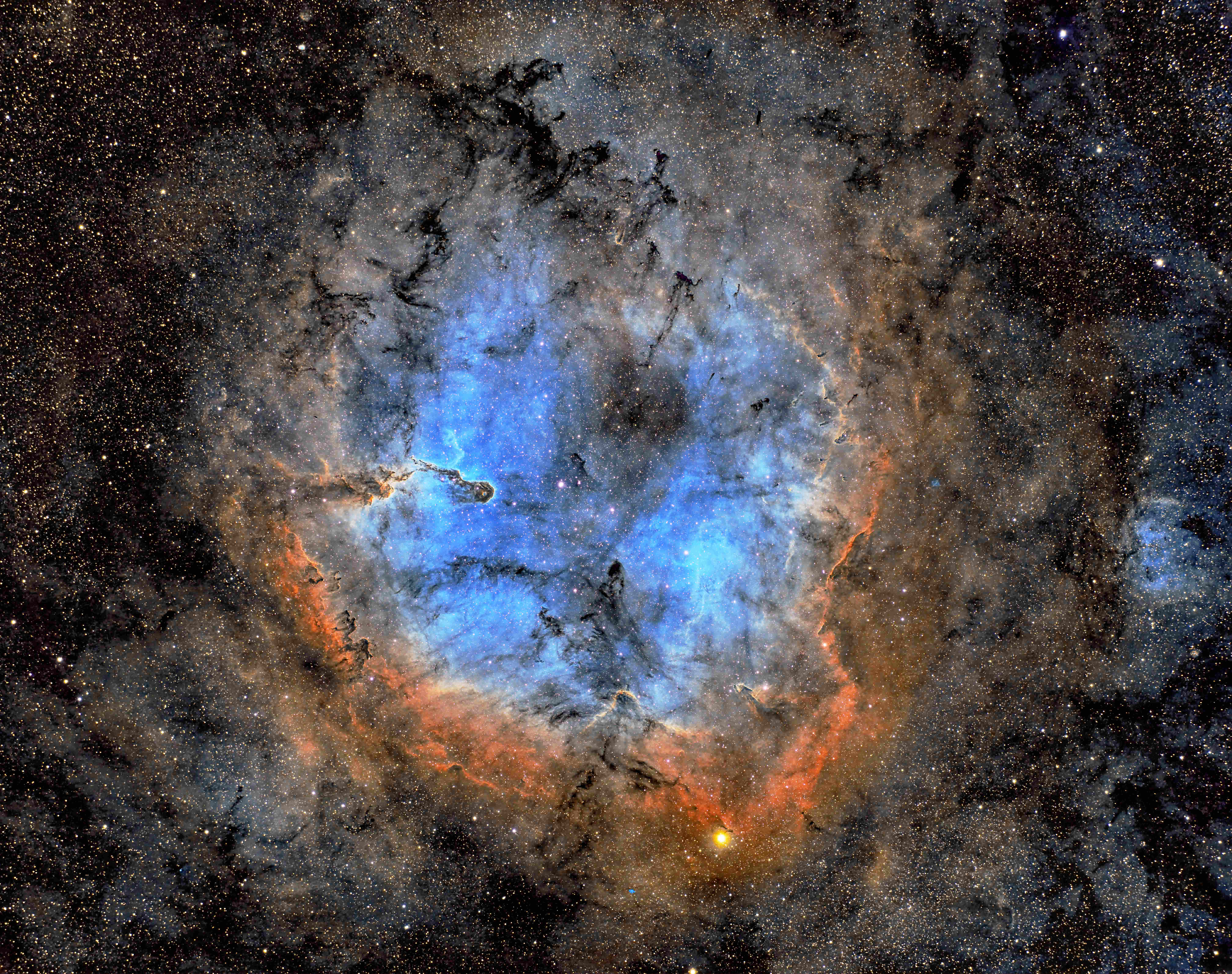 |
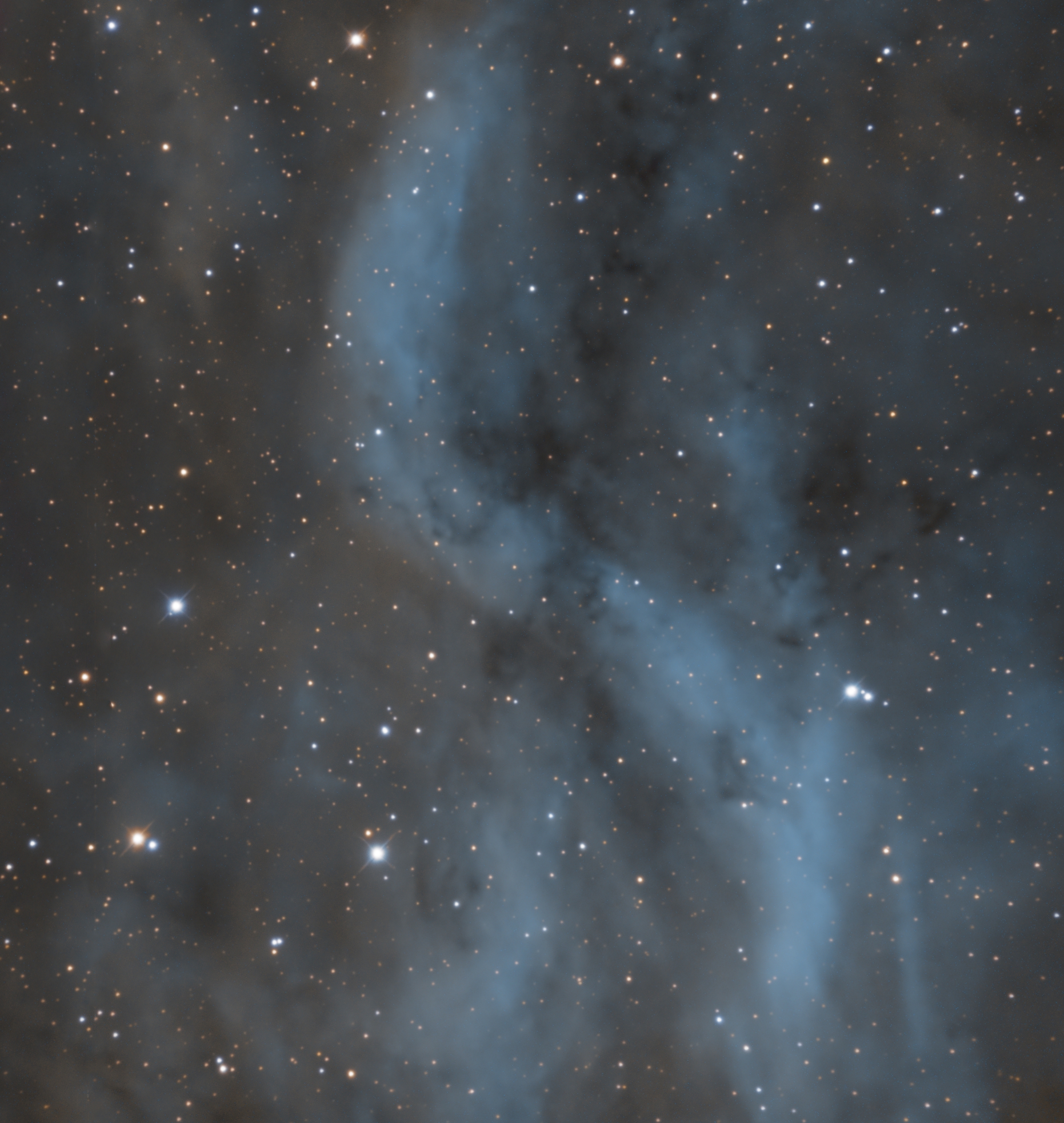
|
|
NGC
7380 - The Wizard Nebula In 1787, Caroline Herschel discovered this nebula in the constellation Cepheus. It is an emission nebula with a n open cluster. It is very faint and requires a very large aperture telescope with an OIII filter or the use of long exposure imaging to see. Josep Drudis acquired the full data set and generously made it available to Adam Block to use in his PixInsight tutorials. Thanks to both Adam and Josep for the use of the data. Image processed by Ron Yelton, original data from Josep Drudis |
RCW
62 This is a third variation of this nebula complex. The other two versions are just a couple of rows above this one. Again, there is precious little information to be found on objects in the RCW catalog. This version was done in the SHO palette. Image processed by Ron Yelton, original data from Telescope Live |
NGC
1788 Out in the constellation Orion (the Hunter) lies this beautiful emission nebula. It was processed as HLRGB. Which means that it is in natural color with a hydrogen component added. The hydrogen is the red that surrounds the blue nebula. There is also a dark nebula component that is also part of NGC 1788 that is called LDN 1616. This nebula lies about 1300 light-years away from us. Image processed by Ron Yelton, original data from Telescope Live |
|
Location: Mt. Lemmon ,
Tucson, AZ
Date: November 17, 2021 Mount: ? Telescope: Planewave 14" FL = 4000mm Camera: ? Exposure: SHO and RGB Total: 31 hrs 30 min |
Location:
Heaven's Mirror Observatory,
Australia
Date: May 2024 Mount: Paramount MX+ Telescope: FSQ-106ED (AUS-2) Camera: QHY600m @ -25c Exposure: 114 x 5 min each for OHS Total: 9 hrs |
Location:
El Sauce Observatory,
Chile
Date: September 2024 Mount: Mathis MI-1000/1250 Telescope: Planewave CDK24 (CHI-1) Camera: QHY600m @-25c
Exposure: 125
x 5 min for
LRGB / 42 x 5 min for Ha Total: 4 hrs 30 min
|
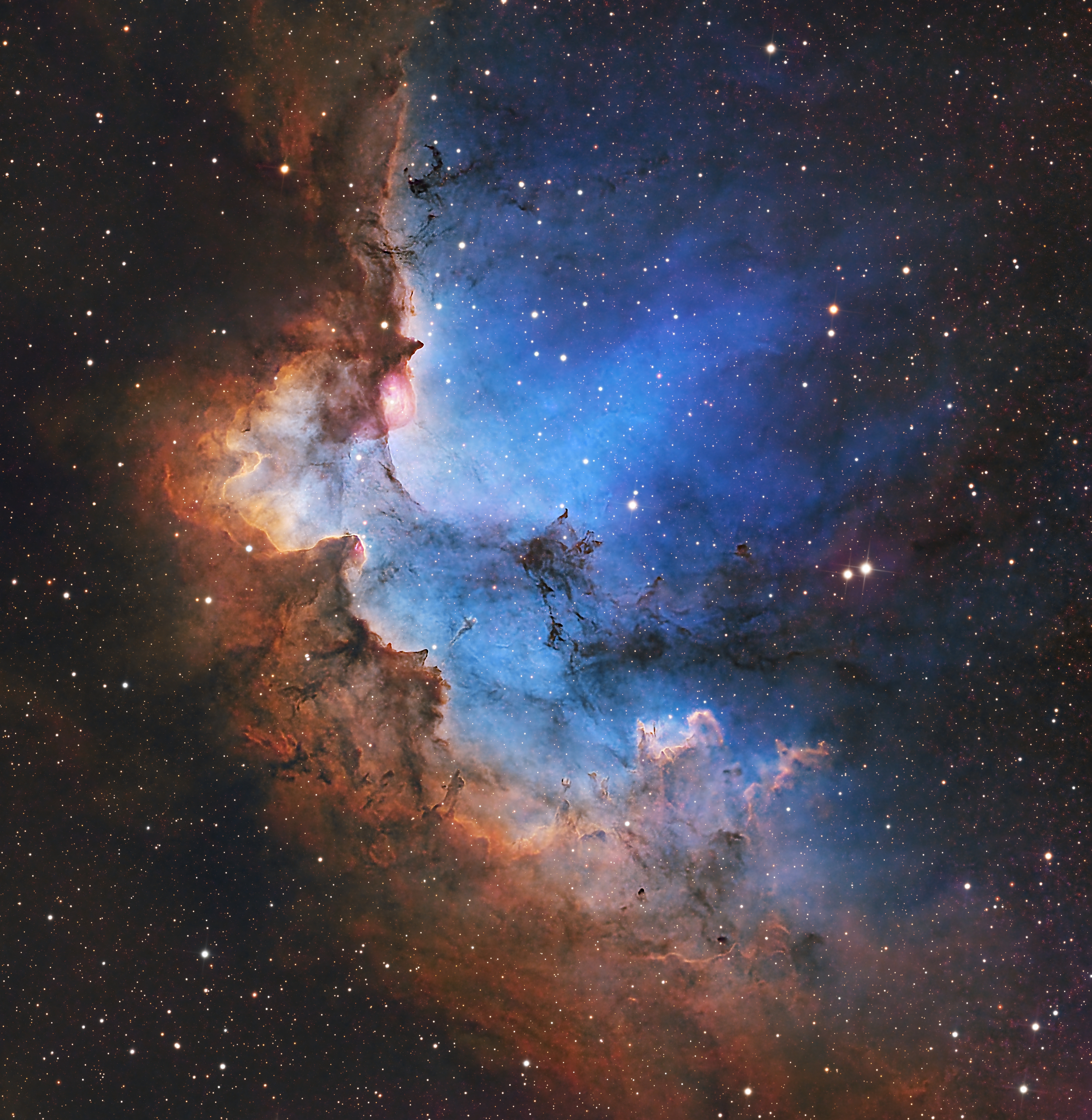 |
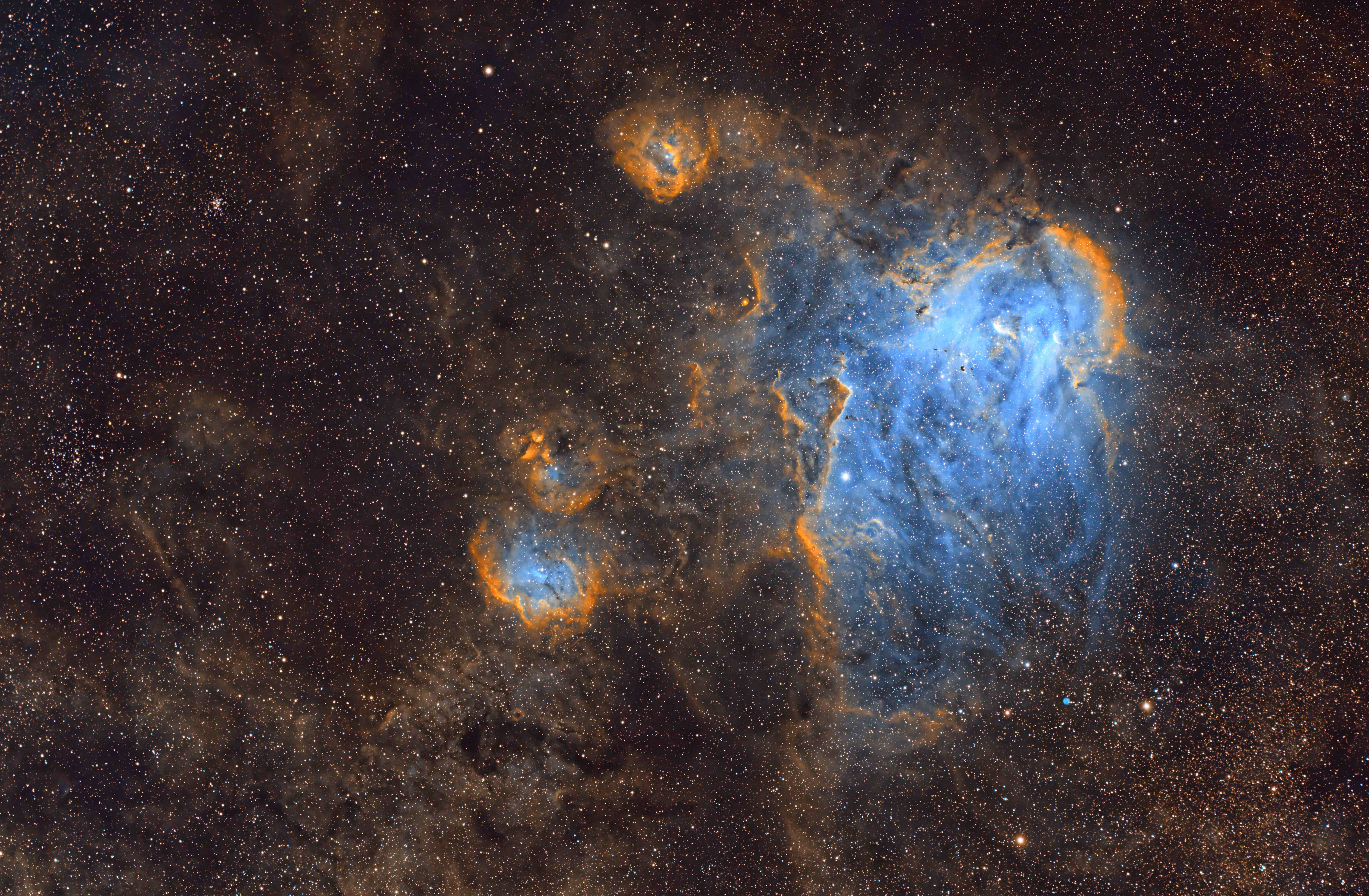 |

|
|
NGC
6888 - The Crescent Nebula About 500 light-years away, in the constellation Cygnus (the Swan), lies the Crescent Nebula. It was discovered by William Herschel in 1792. Somewhere between 250,000 and 400,000 years ago the central star turned into a red giant and shed its outer atmosphere. Later the star became a Wolf-Reyet star which throws off extremely hot and faster moving radiation winds. So we end up with two shock waves - one moving inward and one moving outward. This image was processed in the OHS palette. Down in the lower-left corner is what appears to be another nebula as well as a second one at about the seven o'clock position. Image processed by Ron Yelton, original data from Telescope Live |
The
Dark Tower This interesting nebula in the constellation Scorpius is what is known as a cometary globule.It is also considered to be a dark nebula. Early astronomers thought that it looked somewhat like a comet, thus the name. It is about 5000 light-years from Earth. The tower seems to be pointing at an open star cluster on the right side. The intense radiation from this cluster erodes the gases and leaves behind the globule which is usually a star-making area of its own. This image was processed in natural color. Image processed by Ron Yelton, original data from Telescope Live |
LDN
1089 This dusty region is in the constellation Cepheus (the King). The challenge here is that there are several very bright stars with their light diffused through the dust and gas. How to brighten up the darker dust without saturating the stars. This is the first time I've done this kind of challenge. Image processed by Ron Yelton, original data from Telescope Live |
|
Location: IC Astronomy Observatory, Spain
Date: April 2024 Mount: Paramount MX+ Telescope: Takahashi FSQ-106ED (SPA-1) Camera: QHY600m CMOS @ -25c Exposure: SHO 69 x5 min Total: 5 hrs 45 min1 |
Location:
Heaven's Mirror Observatory,
Australia
Date: October 2024 Mount: Paramount MX+ Telescope: FSQ-106ED (AUS-2) Camera: QHY600m @ -25c Exposure: 88 x 5 min each for HLRGB Total: 5 hrs 20 min |
Location: IC Astronomy Observatory, Spain
Date: August 2024 Mount: Paramount MX+ Telescope: Takahashi FSQ-106ED (SPA-1) Camera: QHY600m CMOS @ -25c Exposure: 44 x5 min LRGB Total: 3 hrs 40 min1 |
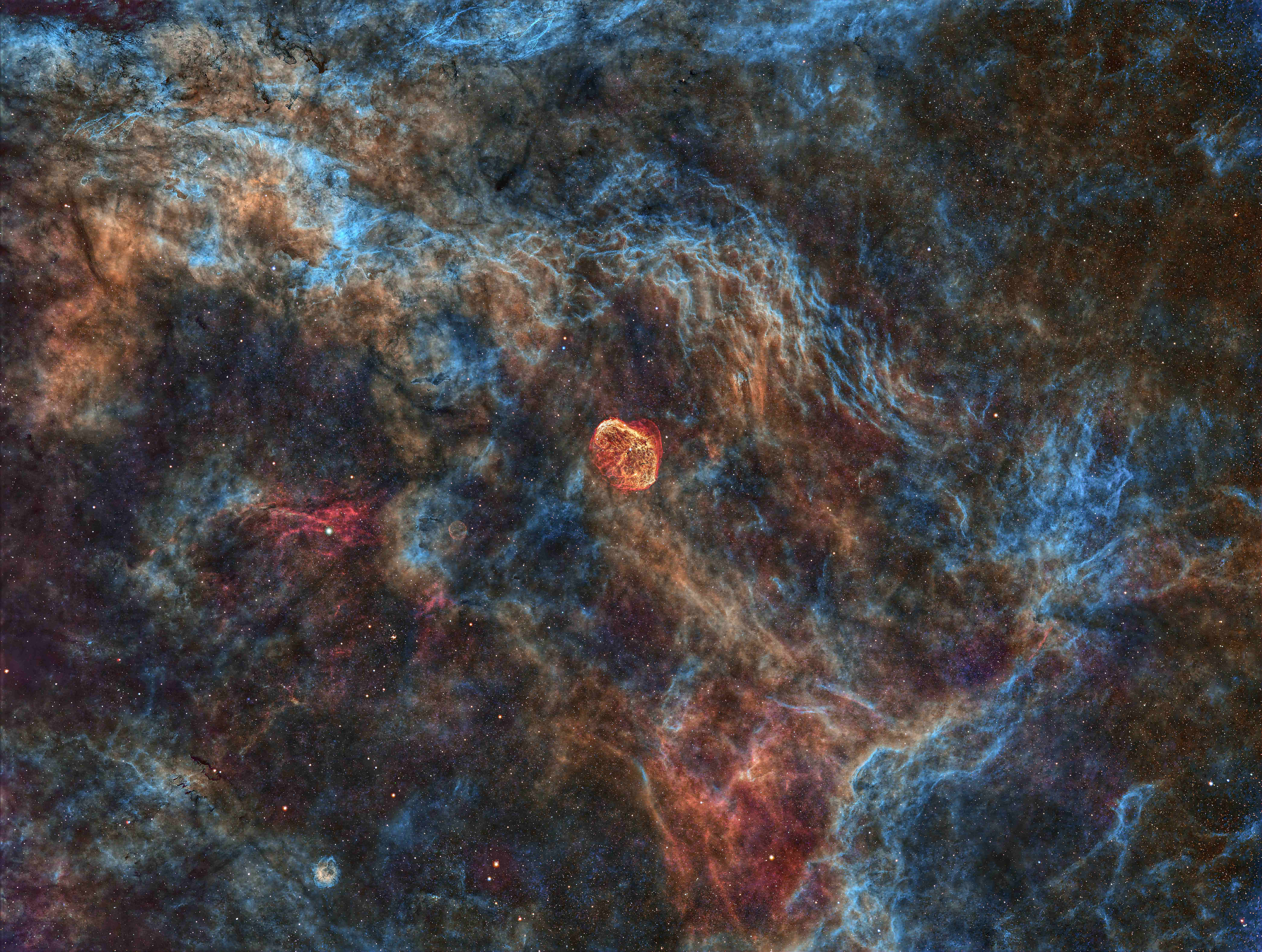 |
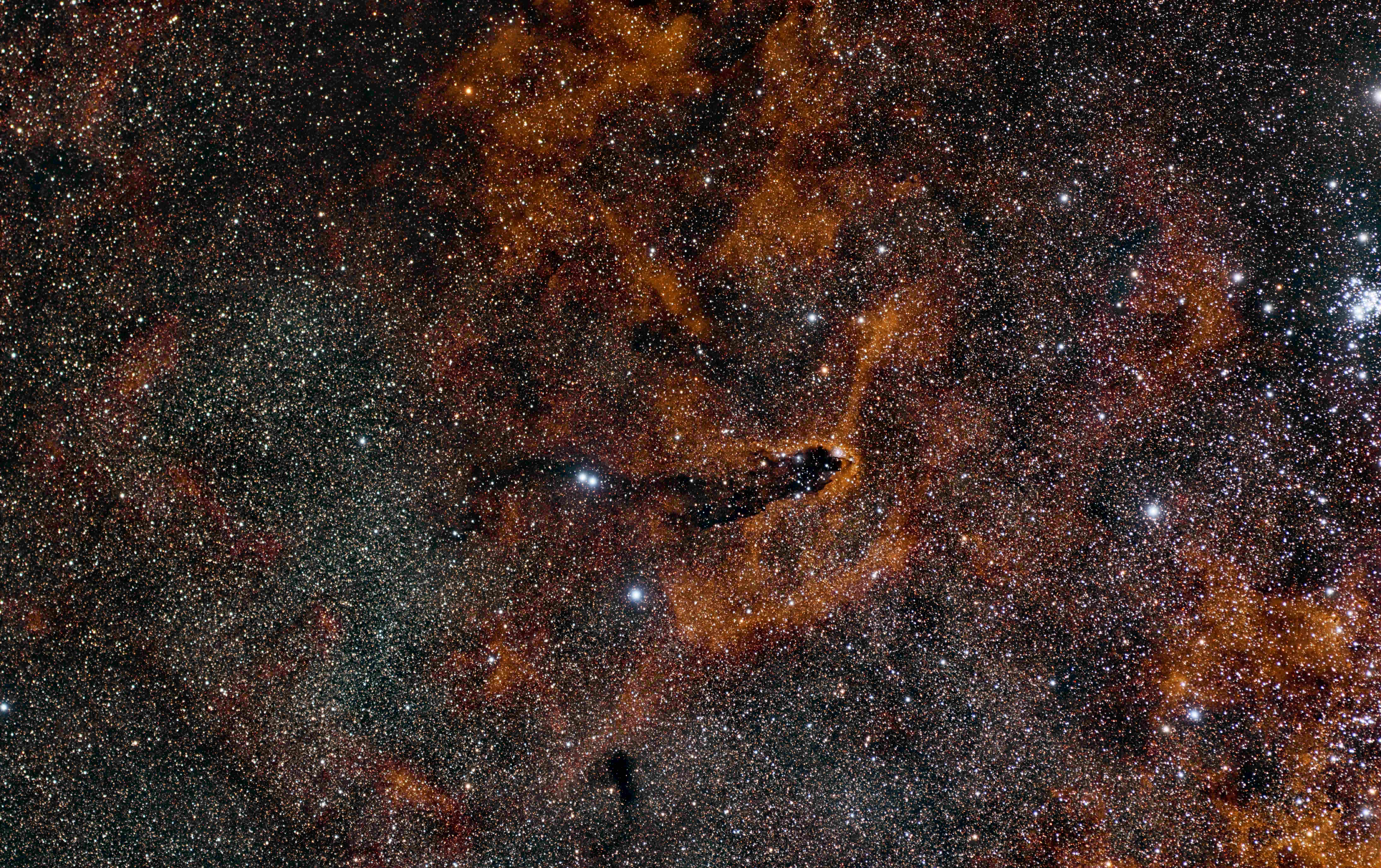 |

|
|
IC 4592 - The Blue Horsehead Nebula This beautiful nebula is a reflection nebula lit by Nu Scorpii in the constellation Scorpius. It is about 400 light-years away from us. Image processed by Ron Yelton, original data from Telescope Live |
Barnard 7 This dark nebula is just one of many that wander through the Constellation Taurus. It's part of a group of molecular clouds called the Taurus Clouds Group. Image processed by Ron Yelton, original data from Telescope Live |
Messier 6 - The Butterfly Cluster This is an open cluster in the southern constellation of Scorpius. Was first recorded as being observed by Giovanni Batista Hodierna in 1654, but credit is usually given to Jean-Philippe Loys de Cheseaux in 1746. Charles Messier added it to his catalog in 1764. It's estimated to be about 1600 light-years away and is high in metallicity, which means that it is high in elements heavier than helium. All of that just means that the majority of the stars are relatively old. It's estimated age is around 92 million years. Image processed by Ron Yelton, original data from Telescope Live |
|
Location:
Heaven's Mirror Observatory,
Australia
Date: May 2023 Mount: Paramount MX+ Telescope: FSQ-106ED (AUS-2) Camera: QHY600m @ -25c Exposure: 165 x 5 min each for LRGB Total: 13 hrs 15 min |
Location: IC Astronomy Observatory, Spain
Date: December 2021 Mount: Paramount MX+ Telescope: Takahashi FSQ-106ED (SPA-1) Camera: FLI PL16083 CCD @ -25c Exposure: 44 x 10 min for RGB Total: 7 hrs 20 min1 |
Location:
Heaven's Mirror Observatory,
Australia
Date: September 2024 Mount: Paramount MX+ Telescope: FSQ-106ED (AUS-2) Camera: QHY600m @ -25c Exposure: 72 x 5 min each for LRGB Total: 6 hrs |
 |
 |
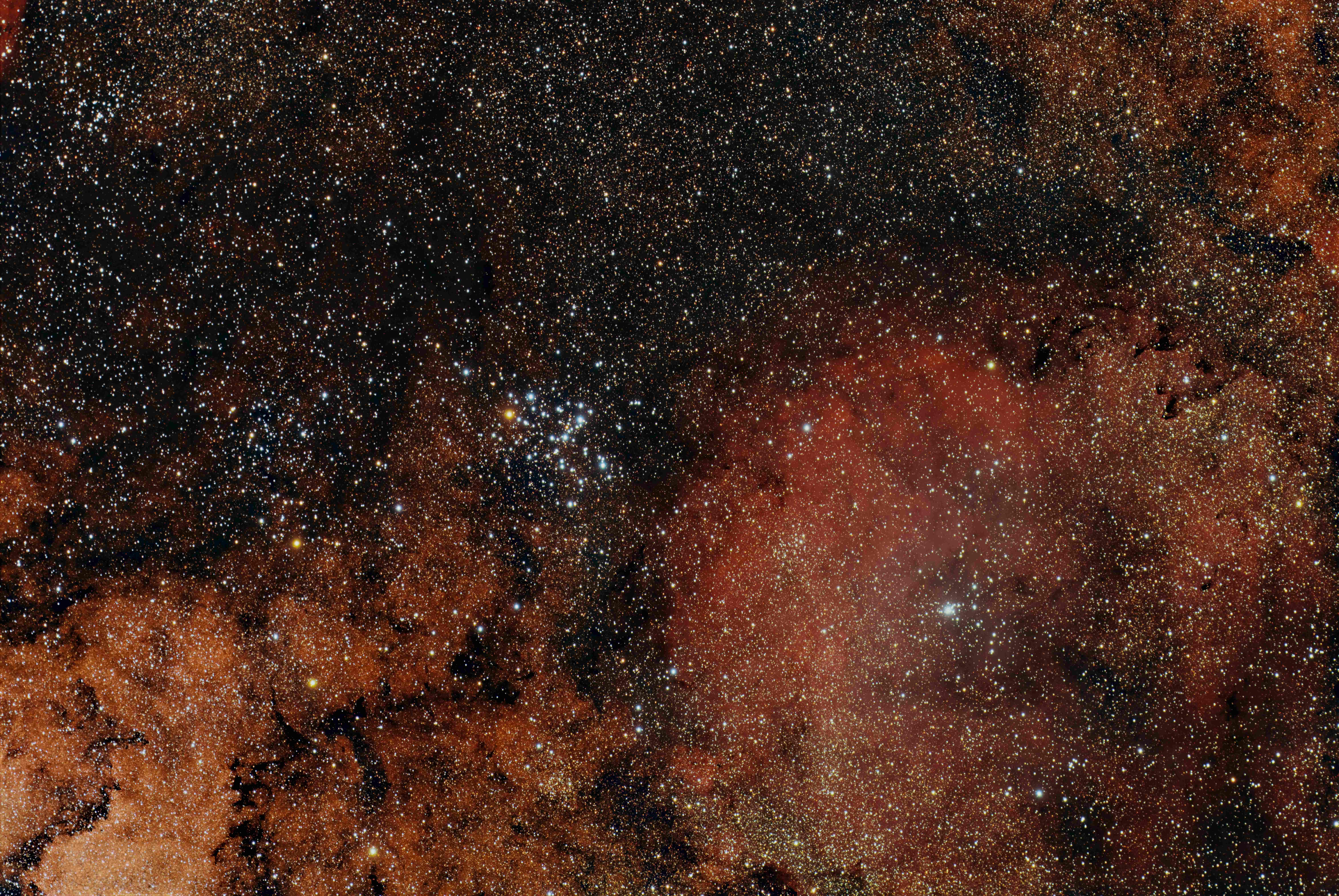
|
Except as noted all images Copyright © by Ron Yelton and may not be used without permission.